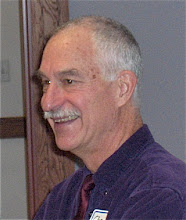 Multiage Portraits: Teaching and Learning in Mixed-Age Classrooms by Anne Bingham
Multiage Portraits: Teaching and Learning in Mixed-Age Classrooms by Anne Bingham(Written on the occasion of posting Portraits in my Goodreads account.)
A few nights ago, I was reading the first chapters of Naked Spirituality by Brian McClaren. McClaren is asking us to reclaim and enliven our spiritual lives by spiritual practice, the first of which is centered on the word, "Here." Something in his writing made me go back and read the introduction to Portraits. In the intro, I touch on teaching as something you are called to do (for the really great teachers) and I make the observation that in these classrooms, when children become absorbed in their learning, it is almost a spiritual experience. They feel and act within their very essence. I just touched on the point lightly. Now, almost twenty years later, having revisited the crystal clear descriptions of elegant everyday practice Peggy and Anne and Molly and Justine wrote about, and sensing again the power of being totally "into" what you are learning, I am more convinced than ever that I was right.
CR
I wrote this book along with Anne, Justine, Molly, and Peggy. It was an attempt to describe what good multiage teaching practices looks like. We did it two ways: I did a participant observation study of Anne's k-4 multiage classroom (Part 1. of the book) and each of the teachers wrote multiple essays describing how they approached their teaching day Part 2. of the book). Part 3. put Parts One and Two together through a reflection on the writing of Lev Vygotsky. The book sold 1300 copies. It is beautiful teacher writing, and the moment to moment interactions I describe in Part 1. aren't so bad either. The teacher-authors taught multiage in the old fashioned way. One class with a group of children who happened to be of different ages. This is not about how to teach "combined grades" or "combination classrooms" organized because of mismatched numbers of children at different grade levels. It's about teaching heterogeneous, family-grouped, collections of children, organized because of a philosophical commitment to good developmentally inspired teaching. Period.
View all my reviews

No comments:
Post a Comment